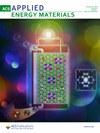Comparison of Deep Neural Networks in the Classification of Bark Beetle-Induced Spruce Damage Using UAS Images
IF 5.4
3区 材料科学
Q2 CHEMISTRY, PHYSICAL
引用次数: 0
Abstract
The widespread tree mortality caused by the European spruce bark beetle (Ips typographus L.) is a significant concern for Norway spruce-dominated (Picea abies H. Karst) forests in Europe and there is evidence of increases in the affected areas due to climate warming. Effective forest monitoring methods are urgently needed for providing timely data on tree health status for conducting forest management operations that aim to prepare and mitigate the damage caused by the beetle. Unoccupied aircraft systems (UASs) in combination with machine learning image analysis have emerged as a powerful tool for the fast-response monitoring of forest health. This research aims to assess the effectiveness of deep neural networks (DNNs) in identifying bark beetle infestations at the individual tree level from UAS images. The study compares the efficacy of RGB, multispectral (MS), and hyperspectral (HS) imaging, and evaluates various neural network structures for each image type. The findings reveal that MS and HS images perform better than RGB images. A 2D-3D-CNN model trained on HS images proves to be the best for detecting infested trees, with an F1-score of 0.759, while for dead and healthy trees, the F1-scores are 0.880 and 0.928, respectively. The study also demonstrates that the tested classifier networks outperform the state-of-the-art You Only Look Once (YOLO) classifier module, and that an effective analyzer can be implemented by integrating YOLO and the DNN classifier model. The current research provides a foundation for the further exploration of MS and HS imaging in detecting bark beetle disturbances in time, which can play a crucial role in forest management efforts to combat large-scale outbreaks. The study highlights the potential of remote sensing and machine learning in monitoring forest health and mitigating the impacts of biotic stresses. It also offers valuable insights into the effectiveness of DNNs in detecting bark beetle infestations using UAS-based remote sensing technology.基于UAS图像的深度神经网络在树皮甲虫诱导云杉损伤分类中的比较
欧洲云杉树皮甲虫(Ips typographus L.)引起的广泛树木死亡是欧洲以挪威云杉为主的森林(Picea abies H. Karst)的一个重大问题,有证据表明,由于气候变暖,受影响地区的树木死亡率增加。迫切需要有效的森林监测方法,及时提供树木健康状况数据,以便开展森林管理业务,防备和减轻甲虫造成的损害。无人飞机系统(UASs)与机器学习图像分析相结合,已成为快速响应森林健康监测的有力工具。本研究旨在评估深度神经网络(dnn)在从UAS图像中识别单个树水平树皮甲虫侵扰的有效性。该研究比较了RGB、多光谱(MS)和高光谱(HS)成像的效果,并评估了每种图像类型的各种神经网络结构。研究结果表明,MS和HS图像比RGB图像表现得更好。在HS图像上训练的2D-3D-CNN模型检测侵染树木的效果最好,f1得分为0.759,而对于枯死树木和健康树木,f1得分分别为0.880和0.928。该研究还表明,测试的分类器网络优于最先进的You Only Look Once (YOLO)分类器模块,并且可以通过集成YOLO和DNN分类器模型来实现有效的分析器。本研究为进一步探索MS和HS成像在树皮甲虫干扰的实时检测方面提供了基础,为森林管理工作应对大规模爆发发挥重要作用。该研究强调了遥感和机器学习在监测森林健康和减轻生物压力影响方面的潜力。它还为使用基于无人机的遥感技术检测树皮甲虫侵扰的dnn的有效性提供了有价值的见解。
本文章由计算机程序翻译,如有差异,请以英文原文为准。
求助全文
约1分钟内获得全文
求助全文
来源期刊

ACS Applied Energy Materials
Materials Science-Materials Chemistry
CiteScore
10.30
自引率
6.20%
发文量
1368
期刊介绍:
ACS Applied Energy Materials is an interdisciplinary journal publishing original research covering all aspects of materials, engineering, chemistry, physics and biology relevant to energy conversion and storage. The journal is devoted to reports of new and original experimental and theoretical research of an applied nature that integrate knowledge in the areas of materials, engineering, physics, bioscience, and chemistry into important energy applications.
 求助内容:
求助内容: 应助结果提醒方式:
应助结果提醒方式:


